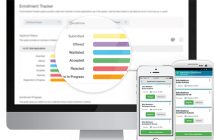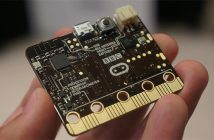
This last week’s adaptive learning summit by the National Education Initiative showcased some interesting technology, including a piece of headgear that can “read’ the minds of students for a more immersive and effective learning experience.
Nish Sonwalkar is the chair of professional development at the MIT Club of Boston and CEO of a company named intellADAPT, writes Nichole Dobo of the Hechinger Report. He has created a working model of a headband that can read and respond to the brain’s electrical signals. He predicts that it will be ready for classroom use in two or three years and will cost about as much as a cheap laptop.
This would open up opportunities for teachers to adjust their teaching style in real time. For example, they can more effectively understand how engaged their students are, and measure which activities improve it.
This sounds like the wave of the future, but it’s not a new idea. Technology that can respond directly to the brains of its users has been in the works for a few years.
Toronto-based technology company InteraXon designed a similar headband that responds to the brain’s electrical signals, dubbing it Muse. The company was founded in 2007 and raised money for the project using Indiegogo. Muse uses EEG (electroencephalography) sensors to monitor brain activity and can use Bluetooth to send its information to any device that is compatible with its app.
The InteraXon website explains:
With practice you can learn to manipulate your brainwave pattern, like flexing a muscle you’ve never used before.
It sends those brainwaves to your smartphone or tablet showing you how well your brain is performing, and also translates your brainwaves into instructions to interact with content on your iOS or Android device.
So far, it has mainly been used to help users learn how to relieve stress based on stressed-out versus relaxed brain patterns, but can also be used to control simple appliances like turning a beer tap on and off.
InteraXon’s founder and CEO Ariel Garten is a “neuro-consultant.” Elijah Wolfson of Newsweek quoted Garten on the transition of the technology into the consumer market:
This is the first EEG device that’s really a consumer product, that’s designed for ease of use, and comes with an app that’s really meaningful.
Once InteraXon improves the app’s ability to read Muse’s signals, plans include collecting data to improve healthcare, creating playlists based on mood, recommending breathing exercises for when you’re stressed, and integrating with dating websites based on your emotional responses to movies and music. In the future, this technology can be integrated with devices and smart homes, allowing for direct control of technology, according to Rachel Feltman of Quartz.




